Address
304 North Cardinal
St. Dorchester Center, MA 02124
Work Hours
Monday to Friday: 7AM - 7PM
Weekend: 10AM - 5PM
Address
304 North Cardinal
St. Dorchester Center, MA 02124
Work Hours
Monday to Friday: 7AM - 7PM
Weekend: 10AM - 5PM
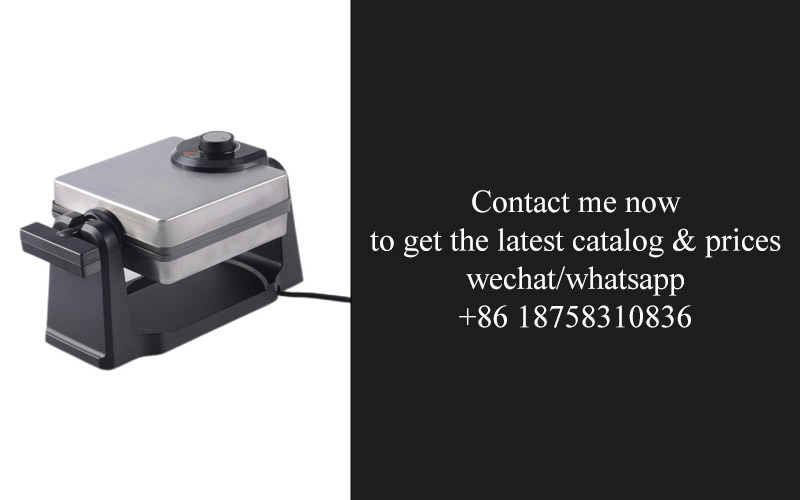
In a world increasingly conscious of health and wellness, the kitchen has become a battleground for innovation. The rise of smart, efficient appliances has transformed the way we cook and live. Among these innovations, air fryers have surged in popularity, offering a healthier alternative to traditional frying methods. As we delve into the heart of the appliance industry, it’s clear that the future holds exciting possibilities, shaped by cutting-edge technology and eco-conscious designs.
In recent years, the culinary landscape has undergone a significant transformation, with a growing emphasis on health and wellness. This shift has spurred a surge in the popularity of cooking methods that are both delicious and nutritious. Enter the air fryer, a kitchen gadget that has quietly revolutionized the way we prepare our meals.
Once considered a novelty, the air fryer has now become a staple in many households. This nifty appliance uses hot air to circulate around food, creating a crispy outer layer while reducing the amount of oil needed. It’s a game-changer for those looking to indulge in their favorite fried foods without the guilt.
The air fryer’s ability to mimic the texture of deep-fried foods without the oil has made it a hit with health-conscious consumers. It’s a perfect solution for those following diets like keto, paleo, or simply aiming to cut down on unhealthy fats. Moreover, the convenience of the air fryer is unmatched; it’s easy to use, cleanup is a breeze, and it can save time in the kitchen.
As the demand for healthier cooking options has skyrocketed, manufacturers have been quick to innovate. The market is now brimming with a variety of air fryers, each boasting unique features that cater to different cooking needs. From countertop models to integrated units, these appliances come in all shapes and sizes, making them a versatile addition to any kitchen.
One of the key factors driving the air fryer’s popularity is its versatility. Whether you’re cooking up a batch of French fries, crispy chicken wings, or even a whole roasted chicken, the air fryer can handle it all. It’s not just about the variety of foods you can prepare; it’s also about the variety of cooking functions available. Many air fryers now come with pre-programmed settings for different types of food, making it even easier to achieve restaurant-quality results at home.
Another aspect that has contributed to the air fryer’s rise is the growing awareness of the environmental impact of traditional cooking methods. Deep-frying requires large amounts of oil, which not only adds calories but also contributes to waste. The air fryer, on the other hand, uses a fraction of the oil and can be reused for multiple batches, making it a more sustainable choice.
The technology behind air fryers has also evolved. Early models were often criticized for their lack of cooking power, resulting in undercooked or unevenly fried food. However, modern air fryers are equipped with advanced heating elements and intelligent temperature control systems. This ensures that food is cooked to perfection, with a crispy exterior and a tender interior.
In addition to the technological advancements, the air fryer market has seen a surge in eco-friendly designs. Many manufacturers are now using sustainable materials and energy-efficient components to reduce their environmental footprint. This not only makes the air fryer a healthier choice for the consumer but also for the planet.
Despite the numerous benefits, some still question the healthiness of air-fried foods. While it’s true that air frying can reduce the amount of oil used, it’s important to note that the cooking time and temperature can also affect the nutritional value. Foods cooked at higher temperatures for longer periods may have a higher content of acrylamide, a potential carcinogen. However, with proper cooking techniques and careful monitoring, the risk can be significantly reduced.
The air fryer has also become a favorite among professional chefs and food enthusiasts. It allows for a wide range of cooking techniques, from searing to roasting, and even baking. Chefs are finding new and exciting ways to use the air fryer in their recipes, pushing the boundaries of what was once thought possible.
In conclusion, the air fryer’s rise to culinary prominence is a testament to the changing times and consumer preferences. As we continue to seek healthier, more sustainable cooking methods, the air fryer is poised to remain a staple in modern kitchens. Its versatility, convenience, and health benefits make it an indispensable tool for anyone looking to enjoy delicious, guilt-free meals.

In the fast-paced world of consumer electronics, the importance of ethical manufacturing practices cannot be overstated. One such initiative that has gained significant traction is the BSCI (Business Social Compliance Initiative). This initiative is a leading program that aims to improve working conditions across the globe, and for air fryer manufacturers, it’s a badge of honor to be BSCI audited.
The BSCI audit process is rigorous and comprehensive, encompassing a wide range of social compliance criteria. It covers areas such as labor rights, working hours, wages, health and safety, and the prevention of child labor and forced labor. For an air fryer manufacturer to be BSCI audited, it must demonstrate a commitment to these standards and undergo a thorough evaluation.
One of the key aspects of the BSCI audit is the assessment of labor rights. This includes the freedom of association and the right to collective bargaining, ensuring that employees have a voice in their workplace. It also involves the elimination of discrimination, both in hiring and in the workplace, and the protection of equal employment opportunities for all individuals.
Workplace safety is another critical component of the BSCI audit. This means that air fryer manufacturers must provide a safe working environment, with proper ventilation, adequate lighting, and protective equipment where necessary. Regular health checks and emergency response plans are also required to ensure the well-being of employees.
When it comes to working hours, BSCI audited manufacturers must adhere to legal regulations and provide fair compensation for overtime. This is particularly important in the manufacturing sector, where long hours can be the norm. The initiative promotes a balance between work and personal life, recognizing the importance of rest and leisure.
Wages are a sensitive topic in the manufacturing industry, and BSCI addresses this head-on. Audited companies must ensure that all workers receive at least the minimum wage, as set by local laws or industry standards, whichever is higher. Fair remuneration is not just about the amount; it also includes benefits such as paid leave, social security, and retirement plans.
Preventing child labor and forced labor is a cornerstone of the BSCI initiative. Manufacturers are required to have policies in place that prevent the exploitation of children and adults. This includes verifying the age of workers, ensuring they are not forced to work against their will, and providing education and training opportunities to help workers improve their skills and futures.
Health and safety in the workplace are paramount, and BSCI audited air fryer manufacturers must demonstrate compliance with relevant laws and industry standards. This includes the management of hazardous substances, the handling of machinery, and the provision of first aid facilities. Regular training sessions and the establishment of safety committees are also part of the audit requirements.
The BSCI audit process is not just about meeting minimum standards; it’s about continuously improving. Manufacturers are expected to have a proactive approach to social compliance, with management systems in place to identify and address risks. This includes regular internal audits and the implementation of corrective actions when issues are identified.
For consumers, the BSCI audit is a testament to the manufacturer’s commitment to ethical practices. It provides peace of mind that the air fryers they purchase are not the result of exploitation or unsafe working conditions. The initiative also encourages transparency, as manufacturers must disclose their BSCI audit results and any corrective actions taken.
In conclusion, being BSCI audited is a significant achievement for any air fryer manufacturer. It signifies a dedication to ethical manufacturing standards, a focus on the well-being of workers, and a commitment to sustainable and responsible business practices. As consumers become more aware of the importance of ethical sourcing, the demand for BSCI audited products is likely to grow, further solidifying the initiative’s role in shaping a more socially responsible industry.
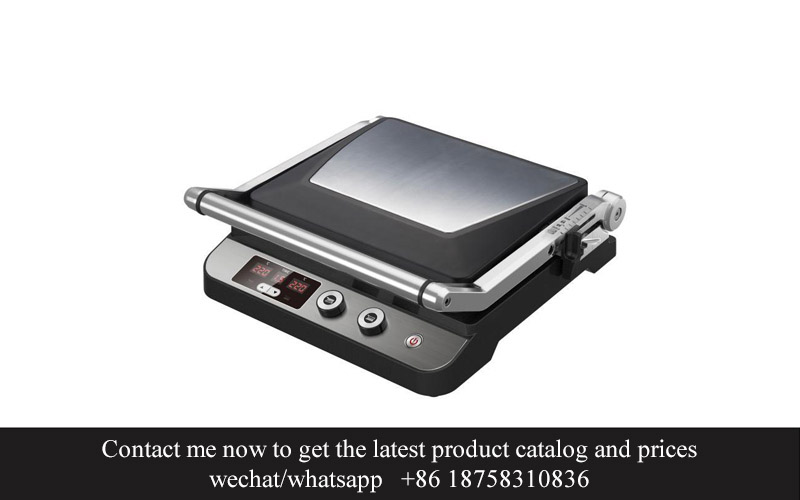
In the heart of the kitchen appliance revolution, air fryers have emerged as a game-changer. These compact cooking devices have not only simplified the process of preparing crispy, golden fried foods but have also redefined health-conscious cooking. The innovation in air fryer designs has been nothing short of remarkable, offering a myriad of features that cater to both the seasoned chef and the health-conscious home cook.
The sleek, modern aesthetic of today’s air fryers is a far cry from the bulkier, more traditional fryers of yesteryears. Designers have focused on creating appliances that are not only functional but also stylish, fitting seamlessly into kitchen countertops. The minimalist design often features a clear, easy-to-read display, intuitive buttons, and a sleek, brushed steel or black finish that complements any kitchen decor.
One of the standout innovations in air fryer design is the inclusion of multiple cooking baskets. This feature allows for batch cooking, reducing the need for multiple frying sessions. It’s particularly beneficial for families or those hosting gatherings, as it can cook a variety of foods at once, ensuring that everything is ready simultaneously.
The size of air fryers has also seen a transformation. While larger models are still available for those who need to cook for a crowd, there are now compact and portable options that can easily be stored away or taken on the go. These travel-sized air fryers are perfect for camping trips, picnics, or for those who have limited kitchen space.
In terms of functionality, air fryers have evolved beyond the simple ‘on’ and ‘off’ switch. Modern models often come with pre-programmed settings for a variety of foods, from chicken wings to vegetables, fish, and even desserts. These settings automatically adjust the temperature and cooking time, making it effortless to achieve the perfect crispiness and texture without the need for constant monitoring.
One of the most innovative design elements is the inclusion of a dehydrating function. This allows users to make their own healthy snacks like kale chips or fruit leather without the added sugars and preservatives found in store-bought versions. It’s a fantastic way to customize your snacks and utilize leftovers.
Another significant design advancement is the inclusion of a non-stick coating inside the air fryer basket. This not only makes cleaning easier but also ensures that food doesn’t stick, leading to healthier cooking with less oil. Some models even have a removable basket and tray, making it even more convenient to clean.
The latest air fryers also incorporate smart technology, allowing them to be controlled via smartphone apps. Users can set timers, monitor cooking progress, and even switch the appliance on or off remotely. This connectivity means that you can start cooking before you arrive home, ensuring that your meal is ready and waiting.
Safety features have also been a focus in the design of modern air fryers. Many come with cool-touch handles and automatic shut-off functions that turn off the appliance if it’s left unattended for too long. These features provide peace of mind, knowing that your kitchen is safe from potential hazards.
The air fryer revolution isn’t just about cooking healthier; it’s also about convenience and versatility. Innovative designs have made air fryers a must-have for anyone looking to reduce oil usage while still enjoying their favorite fried foods. From the smallest countertop models to the largest capable of feeding a crowd, the variety of options available means there’s an air fryer for every kitchen and lifestyle.

In the heart of modern kitchens, the European and American markets have become hotbeds for innovation in the air fryer industry. These regions, with their distinct culinary cultures and consumer preferences, have shaped the evolution of air fryer designs and functionalities.
The European Market: A Fusion of Tradition and TechnologyEuropeans have a reputation for their love of both traditional cooking methods and cutting-edge technology. This blend is evident in the air fryers that dominate the European market. Compact and sleek, these appliances often come with features that cater to the health-conscious consumer. From adjustable temperature controls to various cooking programs, European air fryers are designed to mimic traditional cooking techniques like frying, roasting, and baking, all while reducing oil content significantly.
The American Market: Versatility and ConvenienceIn the United States, the air fryer has found a unique niche. American consumers value versatility and convenience, and the air fryer market reflects this. The range of air fryers in the US market is vast, offering everything from countertop models to integrated units that can be built into kitchen cabinets. These appliances are often equipped with multiple baskets for cooking different foods simultaneously, and some even have smart technology that allows for remote monitoring and control via smartphone apps.
Design Trends in EuropeEuropean air fryers often feature a minimalist aesthetic, with sleek lines and a focus on materials that are both durable and eco-friendly. The design isn’t just about aesthetics; it’s about functionality too. Many European models come with non-stick interiors that are easy to clean, and some even incorporate anti-slip bases to prevent accidents. The trend in Europe is towards air fryers that are not just kitchen gadgets but also stylish additions to the home decor.
Design Trends in AmericaIn the US, air fryers are often seen as a must-have kitchen appliance, and the design reflects this. American air fryers tend to be larger and more robust, capable of handling larger batches of food. The design often includes features like digital displays and intuitive controls, making them user-friendly for those who may not be as tech-savvy. The market also caters to those who enjoy baking, with some models offering additional functions like dehydrating and reheating.
Consumer Preferences in EuropeEuropean consumers are particularly interested in the health benefits of air frying. The European market has seen a rise in air fryers that are marketed as low-fat and low-calorie cooking solutions. Brands are also focusing on sustainability, offering air fryers made from recycled materials and with energy-saving capabilities. The emphasis on health and the environment has led to a demand for air fryers that can cook a variety of foods, from vegetables to meats, without the need for excessive oil.
Consumer Preferences in AmericaAmerican consumers, on the other hand, are more focused on convenience and variety. The market is flooded with air fryers that can handle a wide range of cooking tasks, from crispy French fries to moist chicken wings. Brands in the US are also keen on marketing their products as versatile, offering air fryers that can replace multiple kitchen appliances. The convenience of being able to cook a variety of dishes in one appliance is a major selling point.
The Impact of Global TrendsBoth European and American markets are influenced by global trends, such as the growing popularity of plant-based diets. This has led to an increase in air fryer models that are designed to cook vegetables and legumes to perfection. Additionally, the rise of social media has played a significant role in shaping consumer preferences, with influencers and chefs showcasing the versatility of air fryers in creating impressive dishes.
The Future of Air Fryers in Europe and AmericaLooking ahead, the European and American markets are expected to continue evolving. Innovations such as air fryers with smart technology, which can learn and adapt to individual cooking preferences, are on the horizon. There’s also a growing interest in air fryers that can connect to the home’s smart system, offering even more convenience and control. As the demand for healthier, more sustainable cooking solutions grows, the air fryer industry is poised to expand further, bringing new and exciting designs to both European and American kitchens.

In recent years, the kitchen appliance market has seen a surge in innovation and consumer demand. Understanding the latest market trends and consumer insights is crucial for anyone looking to stay ahead in this dynamic sector. Here’s a closer look at what’s currently hot in the kitchen appliance world.
Smart Technology IntegrationThe integration of smart technology into kitchen appliances has become a major trend. Consumers are increasingly seeking appliances that can be controlled via smartphones or tablets, offering convenience and connectivity. From smart refrigerators that can manage your grocery list to ovens that can be preheated remotely, the ability to interact with kitchen appliances through digital devices is becoming a must-have feature.
Energy Efficiency and SustainabilityWith growing environmental concerns, energy efficiency has never been more important. Kitchen appliances that are energy-saving and eco-friendly are not only popular but also seen as responsible choices. This trend extends beyond just the appliances themselves; manufacturers are also focusing on sustainable packaging and recyclable materials to reduce their environmental footprint.
Health and Wellness FocusAs people become more health-conscious, kitchen appliances that promote wellness are gaining traction. Air fryers, for example, have soared in popularity due to their ability to cook food with less oil, making them a healthier option. Similarly, multi-functional blenders and food processors that can create nutritious smoothies and soups at the touch of a button are becoming standard in many homes.
Ease of Use and AestheticsThe convenience of use and the aesthetic appeal of kitchen appliances are also significant factors. Modern consumers are looking for appliances that are intuitive to operate and complement their kitchen decor. Sleek designs, touchscreens, and intuitive interfaces are becoming more common, reflecting a shift towards appliances that are not just functional but also stylish.
Customization and PersonalizationThe ability to customize and personalize kitchen appliances is another emerging trend. From adjustable settings on coffee machines to refrigerators that can be customized with digital displays, consumers are seeking appliances that can be tailored to their specific needs and preferences.
Technology-Driven InnovationsThe kitchen appliance industry is seeing a wave of technology-driven innovations. From self-cleaning ovens that use steam to clean themselves to microwaves that can identify the type of food being cooked and adjust the cooking time accordingly, these advancements are making cooking more efficient and less time-consuming.
Safety and Security FeaturesWith safety being a top priority, kitchen appliances are now being equipped with advanced safety features. Smart sensors that can detect leaks, automatic shut-off functions, and child lock options are becoming standard, providing peace of mind for busy families and individuals alike.
Smart Connectivity and Data AnalysisThe rise of the Internet of Things (IoT) has also impacted the kitchen appliance market. Appliances that can connect to the internet and provide data analytics on usage and maintenance are becoming more prevalent. This not only helps consumers manage their appliances more effectively but also opens up new opportunities for predictive maintenance and personalized service offerings.
E-commerce and Direct-to-Consumer SalesThe growth of e-commerce has changed the way consumers purchase kitchen appliances. Direct-to-consumer sales, once a rarity, are now becoming more common, with brands offering exclusive deals and personalized shopping experiences online. This shift has also led to an increase in after-sales services and customer support.
In conclusion, the kitchen appliance market is evolving rapidly, driven by consumer demands for smart, efficient, and personalized products. As manufacturers continue to innovate, it’s clear that the future of kitchen appliances will be defined by technology, sustainability, and a deep understanding of consumer needs.
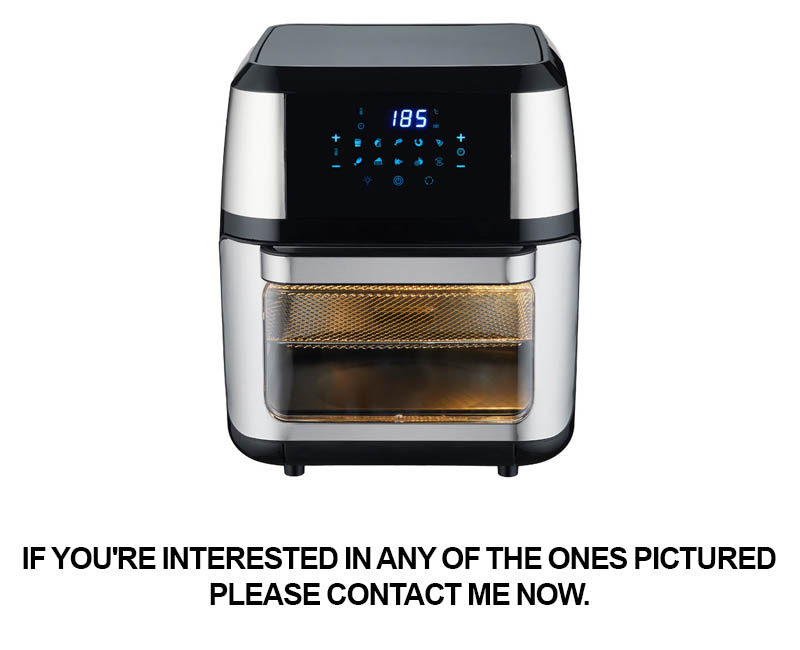
In the ever-evolving landscape of kitchen appliances, data has emerged as a pivotal force in driving innovation and shaping the future. From consumer preferences to market demands, the insights gleaned from data analysis are revolutionizing how we approach kitchen technology. Here’s a closer look at how data is at the forefront of this transformation.
Consumer Behavior PatternsUnderstanding consumer behavior is crucial for appliance manufacturers. Data analytics allows companies to track usage patterns, preferences, and buying habits. For instance, data may reveal that consumers are gravitating towards appliances that offer versatility, such as multi-functional cooktops or smart refrigerators that can manage meal planning and inventory. By analyzing this data, manufacturers can tailor their product lines to meet these evolving needs.
Predictive Maintenance and EfficiencyData-driven technology is also optimizing the efficiency of kitchen appliances. Smart appliances can collect data on their performance and usage, enabling predictive maintenance. For example, a smart oven might send a notification to the user when it’s due for a cleaning cycle or when a part is about to fail, preventing costly repairs and downtime. This not only extends the life of the appliance but also ensures that it operates at peak efficiency.
Customization and PersonalizationThe era of one-size-fits-all appliances is giving way to customization. Data allows manufacturers to offer personalized features and settings based on individual user preferences. For example, a microwave might learn a user’s cooking times and power levels, adjusting automatically for different types of food. This level of personalization enhances the user experience and can lead to increased satisfaction and loyalty.
Energy Consumption AnalysisEnergy efficiency is a major concern for consumers and governments alike. Data analytics can help appliances consume less energy without compromising performance. By analyzing energy usage patterns, manufacturers can design appliances that are more energy-efficient, which is not only environmentally friendly but also cost-effective for consumers.
Integration with Smart Home EcosystemsThe integration of kitchen appliances with smart home systems is becoming increasingly popular. Data plays a crucial role in ensuring seamless integration. For instance, a smart fridge can communicate with a user’s smartphone app to provide updates on food storage and suggest recipes based on the ingredients available. This integration is made possible through the collection and analysis of data that allows appliances to interact with other smart devices in the home.
Health and Wellness DataHealth-conscious consumers are driving the development of kitchen appliances that can track and promote wellness. Smart scales, for example, can provide detailed nutritional information and calorie counts, while ovens can offer pre-programmed settings for healthy cooking methods like air frying or slow cooking. Data analytics enables these appliances to offer tailored health and wellness solutions.
Sustainability and Environmental ImpactData is also being used to reduce the environmental impact of kitchen appliances. Manufacturers are analyzing the lifecycle of their products to identify areas for improvement in terms of materials, manufacturing processes, and end-of-life disposal. By understanding the environmental footprint of their products, companies can make more sustainable choices and offer eco-friendly options to consumers.
Market Analysis and Competitive EdgeFor manufacturers, data analysis provides a competitive edge. By monitoring market trends and consumer feedback, companies can identify gaps in the market and develop new products that meet unmet needs. This proactive approach allows businesses to stay ahead of the curve and capture market share.
Innovation and Research and DevelopmentData-driven insights are fueling innovation in the kitchen appliance industry. By analyzing data from user feedback, testing, and market research, companies can invest in R&D that leads to groundbreaking products. This could include advancements in cooking technology, user interface design, or even the creation of entirely new categories of kitchen appliances.
In conclusion, data is a powerful tool that is reshaping the future of kitchen appliances. By leveraging the insights gained from data analytics, manufacturers can create appliances that are more efficient, personalized, sustainable, and aligned with the evolving needs and preferences of consumers. The role of data in this transformation is undeniable, and its impact will only continue to grow as technology advances.
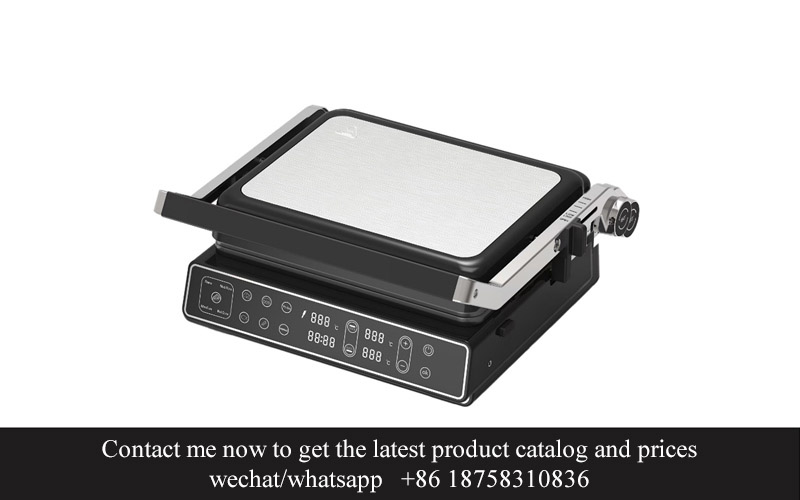
In recent years, the kitchen appliance industry has seen a remarkable shift towards innovation and sustainability. The perfect blend of these two concepts is reshaping how we approach our daily cooking routines and the appliances we use. Here’s a closer look at how innovation and sustainability are intertwining in the world of kitchen appliances.
Smart Technology IntegrationModern kitchen appliances are increasingly equipped with smart technology, allowing for greater efficiency and convenience. From fridges that can track your grocery needs to ovens that can be controlled remotely via an app, the integration of smart technology not only makes appliances more user-friendly but also more energy-efficient. This blend of innovation and sustainability ensures that appliances can perform their tasks with minimal environmental impact.
Energy-Efficient DesignOne of the most significant advancements in kitchen appliances is the focus on energy efficiency. Manufacturers are now designing appliances that consume less energy while still delivering the same level of performance. For instance, induction cooktops have become popular for their quick heating and lower energy consumption compared to traditional electric or gas cooktops. These energy-efficient designs not only reduce utility bills but also contribute to a smaller carbon footprint.
Recyclable MaterialsThe use of recyclable materials in kitchen appliances is another way that innovation and sustainability are coming together. Companies are now using recycled metals, plastics, and other materials to manufacture appliances that are not only durable but also environmentally friendly. This approach not only reduces waste but also promotes a circular economy, where resources are conserved and reused.
Water ConservationWater is a precious resource, and kitchen appliances are now being designed to use water more efficiently. Dishwashers, for example, have evolved to use less water per cycle while still providing thorough cleaning. Similarly, washing machines are now equipped with advanced water-saving cycles that reduce water consumption without compromising on cleaning performance. These innovations not only help conserve water but also save consumers money on their water bills.
Healthier Cooking OptionsInnovation in kitchen appliances is also leading to healthier cooking options. Air fryers, for instance, have gained popularity as a healthier alternative to deep-frying, allowing for crispy, golden results with a fraction of the oil. Similarly, slow cookers and pressure cookers have become staples in many kitchens, offering convenient ways to prepare nutritious meals with minimal energy use. These appliances encourage healthier lifestyles while being environmentally conscious.
Eco-Friendly Cooking UtensilsThe rise of eco-friendly cooking utensils is yet another example of how innovation and sustainability are merging. Companies are now producing cookware made from sustainable materials like bamboo, wood, and stainless steel. These utensils not only perform well but also have a lower environmental impact compared to traditional non-stick coatings that can release harmful chemicals when overheated.
Smart Home IntegrationThe integration of kitchen appliances into smart home systems is a testament to the perfect blend of innovation and sustainability. By connecting appliances to a home automation system, users can manage their kitchen devices more efficiently. For example, a smart refrigerator can remind you to buy groceries when items are running low, and a smart oven can be preheated remotely, saving energy and time. This integration not only enhances the user experience but also optimizes energy usage.
Longevity and UpgradabilityAnother aspect of innovation meeting sustainability is the emphasis on longevity and upgradability. Modern kitchen appliances are designed to last longer, with better components and construction. Additionally, many appliances can be upgraded with new features through software updates, extending their lifespan and reducing the need for frequent replacements. This approach not only minimizes waste but also encourages a more sustainable approach to consumer electronics.
Community Engagement and ResponsibilityLastly, the perfect blend of innovation and sustainability in kitchen appliances is reflected in the corporate social responsibility (CSR) efforts of manufacturers. Many companies are engaging with local communities to ensure that their production processes are environmentally friendly and socially responsible. This includes initiatives like recycling programs, energy-saving workshops, and partnerships with sustainable agriculture projects.
In conclusion, the kitchen appliance industry is at a crossroads where innovation and sustainability are not just complementary but integral to each other. By focusing on energy efficiency, smart technology, water conservation, and eco-friendly materials, manufacturers are not only creating appliances that cater to the modern consumer’s needs but also contributing to a more sustainable future.

In today’s fast-paced world, consumers are increasingly seeking products that not only enhance their lives but also align with their values. When it comes to kitchen appliances, the choice of a manufacturer can be a pivotal decision. Here’s why opting for a BSCI audited air fryer manufacturer could be the wise choice for many consumers.
The BSCI Certification: A Benchmark for Ethical PracticesA BSCI audited air fryer manufacturer adheres to the Business Social Compliance Initiative (BSCI) standards, which are globally recognized for ensuring ethical working conditions. This certification ensures that the production process is free from child labor, forced labor, and discrimination, among other critical issues. Consumers who prioritize ethical sourcing and fair labor practices find comfort in knowing that their purchase supports a company that stands by these principles.
Quality Assurance Through Rigorous AuditsRegular audits by BSCI are a testament to a manufacturer’s commitment to quality. These audits scrutinize every aspect of the production process, from raw material sourcing to the final product assembly. By choosing a BSCI audited air fryer, consumers gain confidence in the appliance’s reliability and durability, knowing that it has passed stringent quality checks.
Safety and Compliance with International RegulationsSafety is paramount in kitchen appliances, and a BSCI audited manufacturer is bound by international regulations. This means that the air fryers they produce are not only safe to use but also comply with the latest safety standards set by regulatory bodies. Consumers can rest easy, knowing that their appliance has been designed with their safety in mind.
Transparency in Production ProcessesOne of the key benefits of choosing a BSCI audited air fryer manufacturer is the transparency it offers. These companies are open about their production processes, allowing consumers to trace the origin of their appliances. This level of transparency fosters trust and allows consumers to make informed decisions based on the values that matter to them.
Environmental ResponsibilityIn an era where environmental concerns are at the forefront, a BSCI audited air fryer manufacturer often demonstrates a commitment to sustainability. These companies are more likely to use eco-friendly materials, minimize waste, and reduce their carbon footprint. By choosing such a manufacturer, consumers are contributing to a greener planet.
Supporting Local CommunitiesBSCI audited manufacturers often engage with local communities, providing them with employment opportunities and contributing to the local economy. This support extends beyond just the workplace, with many of these companies investing in community development projects. Consumers who buy from these manufacturers are directly supporting the communities where the appliances are made.
Long-Term Customer SatisfactionThe rigorous standards set by BSCI are designed to ensure long-term customer satisfaction. By focusing on ethical practices, quality, safety, and sustainability, these manufacturers create products that are built to last. This not only reduces the need for frequent replacements but also minimizes electronic waste, aligning with the values of many environmentally conscious consumers.
Competitive Pricing Without Compromising QualitySurprisingly, the cost of a BSCI audited air fryer is often comparable to non-certified products. This is because the efficiency and quality of these appliances are such that they require less maintenance and last longer. Consumers can enjoy the benefits of a high-quality appliance without paying a premium price.
Innovation and Continuous ImprovementA BSCI audited air fryer manufacturer is also likely to be at the forefront of innovation. These companies are driven to improve their products continuously, ensuring that they stay ahead of market trends. This means that consumers get access to the latest technology and features without compromising on the ethical standards that are important to them.
In conclusion, choosing a BSCI audited air fryer manufacturer is a decision that aligns with a consumer’s values. It guarantees ethical practices, safety, quality, and environmental responsibility. By supporting these companies, consumers are not just buying an appliance; they are investing in a better future for all.
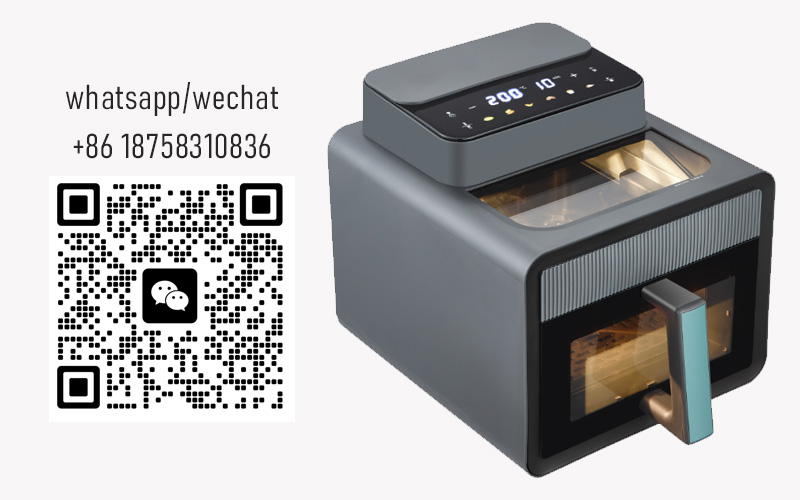
In the ever-evolving landscape of kitchen appliances, certain brands have emerged as leaders, showcasing remarkable success stories. These brands have not only captured the market’s attention but have also set new standards in innovation and customer satisfaction. Let’s delve into some of these success stories to understand what makes these leading brands stand out.
The story of Brand X began with a simple yet revolutionary idea: to create a microwave that could defrost and reheat food with precision. Their initial product was met with skepticism, but through relentless innovation and customer feedback, they developed a microwave that not only met but exceeded expectations. Today, Brand X is synonymous with microwave technology, leading the way in energy efficiency and user-friendly features.
Brand Y took a different approach by focusing on the health and wellness of its customers. They introduced a line of air fryers that promised to cook delicious, crispy foods with minimal oil. This shift in mindset resonated with health-conscious consumers, and the brand quickly gained a loyal following. Their commitment to innovation led to the development of smart air fryers that could be controlled via a smartphone app, allowing users to monitor and adjust cooking settings remotely.
Brand Z, a relative newcomer to the kitchen appliance market, made waves with their eco-friendly product line. Their commitment to sustainability was evident in every aspect of their appliances, from the materials used to the energy-saving features. Their induction cooktops, for example, were not only efficient but also had sleek designs that complemented modern kitchen aesthetics. This blend of environmental consciousness and style caught the eye of consumers, propelling the brand to new heights.
Another standout brand, Brand W, focused on the convenience of their customers. They recognized that time is a precious commodity, and their line of kitchen appliances was designed to save time without compromising on quality. Their multi-functional countertop ovens, for instance, could bake, broil, and roast, making them a one-stop solution for busy households. This emphasis on convenience and versatility has made Brand W a go-to choice for many consumers.
In the world of kitchen appliances, success is often a testament to a brand’s ability to anticipate market trends and meet customer needs. Brand V, known for their high-quality blenders, is a prime example. They invested in research and development to create blenders that could handle the toughest ingredients, from ice to nuts. Their commitment to durability and performance has earned them a reputation for producing some of the best blenders on the market.
Brand U took a different path by focusing on the unique preferences of different demographics. Their product line included a variety of appliances tailored to the specific needs of young professionals, families, and even individuals with specific dietary requirements. This targeted approach allowed them to capture niche markets and build a strong brand identity.
The success stories of these leading brands are not just about the products they sell; they are about the values they embody and the experiences they deliver. Brand T, for example, stands out for its exceptional customer service. They offer extensive warranties and easy-to-access support, ensuring that their customers feel valued and cared for. This level of customer loyalty is a testament to the brand’s commitment to excellence.
In the kitchen appliance industry, innovation is key to staying relevant. Brand S has been at the forefront of this trend, constantly pushing the boundaries of what’s possible. Their line of smart kitchen appliances, equipped with AI and machine learning capabilities, can predict cooking times and even suggest recipes based on the ingredients you have on hand. This level of personalization has set them apart from their competitors.
Brand R, on the other hand, has succeeded by focusing on the emotional connection between people and their appliances. Their appliances are not just tools but companions that enhance daily life. The brand’s marketing campaigns often feature heartwarming stories of families coming together over a meal prepared with their products. This emotional appeal has helped to build a strong brand community.
In conclusion, the success stories of these leading brands in the kitchen appliance industry are diverse and inspiring. They demonstrate how a combination of innovation, customer focus, sustainability, and emotional appeal can lead to market dominance. By studying these case studies, we can gain valuable insights into what it takes to create a lasting impact in the competitive world of kitchen appliances.
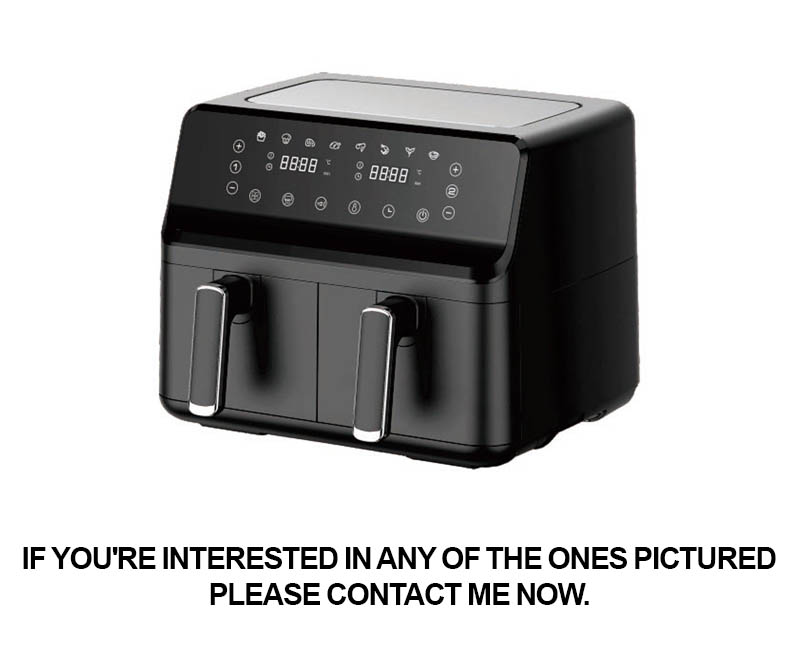
In the ever-evolving world of kitchen appliances, air fryers have emerged as a game-changer. These devices have not only revolutionized the way we cook but also brought a newfound appreciation for healthier eating habits. As we look ahead, the future of air fryers promises to be even more exciting, with advancements that could redefine what we know about cooking and sustainability. Here’s a glimpse into what to expect next in the world of air fryers.
The integration of smart technology is already making waves in the kitchen appliance industry, and air fryers are no exception. Imagine an air fryer that not only cooks your food but also learns from your preferences and cooking habits. With the help of AI, these smart air fryers could adjust their settings to provide the perfect cooking experience every time, ensuring that your meals are cooked to your liking without any guesswork.
Energy efficiency is another area where we can expect significant improvements. As environmental concerns grow, manufacturers are focusing on creating air fryers that consume less energy while still delivering exceptional cooking results. This could mean the development of more energy-saving modes or even air fryers that harness renewable energy sources, making them a greener choice for eco-conscious consumers.
The rise of personalized cooking experiences is another trend to watch. Air fryers could soon offer a range of features that cater to specific dietary needs, such as low-carb, gluten-free, or vegan settings. These customized options would allow users to enjoy their favorite foods without compromising on health or taste.
One of the most anticipated developments is the ability to connect air fryers to the internet. This would enable users to control their appliances remotely, using their smartphones or other devices. Imagine being able to start cooking your dinner before you even arrive home, or having your air fryer send you a notification when your food is ready. The convenience of smart connectivity is set to transform the way we interact with our kitchen appliances.
In terms of design, we might see air fryers that are not only functional but also stylish. As kitchen appliances become more of a statement piece than just tools for cooking, manufacturers are focusing on aesthetics. The future could bring us air fryers with sleeker designs, integrated into kitchen countertops or even with interactive displays that add a touch of modern technology to the cooking experience.
Health and safety are always top priorities, and the future of air fryers is no different. We can expect to see a focus on materials that are non-toxic and safe for food contact, as well as innovative features that prevent overcooking and burning. These safety enhancements would make air fryers even more appealing to health-conscious consumers.
The rise of modular cooking systems is also a possibility. Imagine a kitchen where different cooking modules, like an air fryer, a steamer, or a blender, can be swapped in and out as needed. This modular approach would allow for greater versatility in the kitchen, with the ability to cook a wide variety of dishes using a single base unit.
Lastly, the future of air fryers may involve a greater emphasis on sustainability. This could mean the use of recycled materials in the construction of air fryers, or the development of air fryers that are designed to be easily disassembled and recycled at the end of their life. As consumers become more environmentally aware, the demand for sustainable kitchen appliances is likely to grow, and air fryers are poised to meet this demand.
In conclusion, the future of air fryers is bright, with a host of innovations on the horizon. From smart technology and energy efficiency to personalized cooking experiences and sustainable design, the next generation of air fryers is set to bring a whole new level of convenience, health, and sustainability to our kitchens.